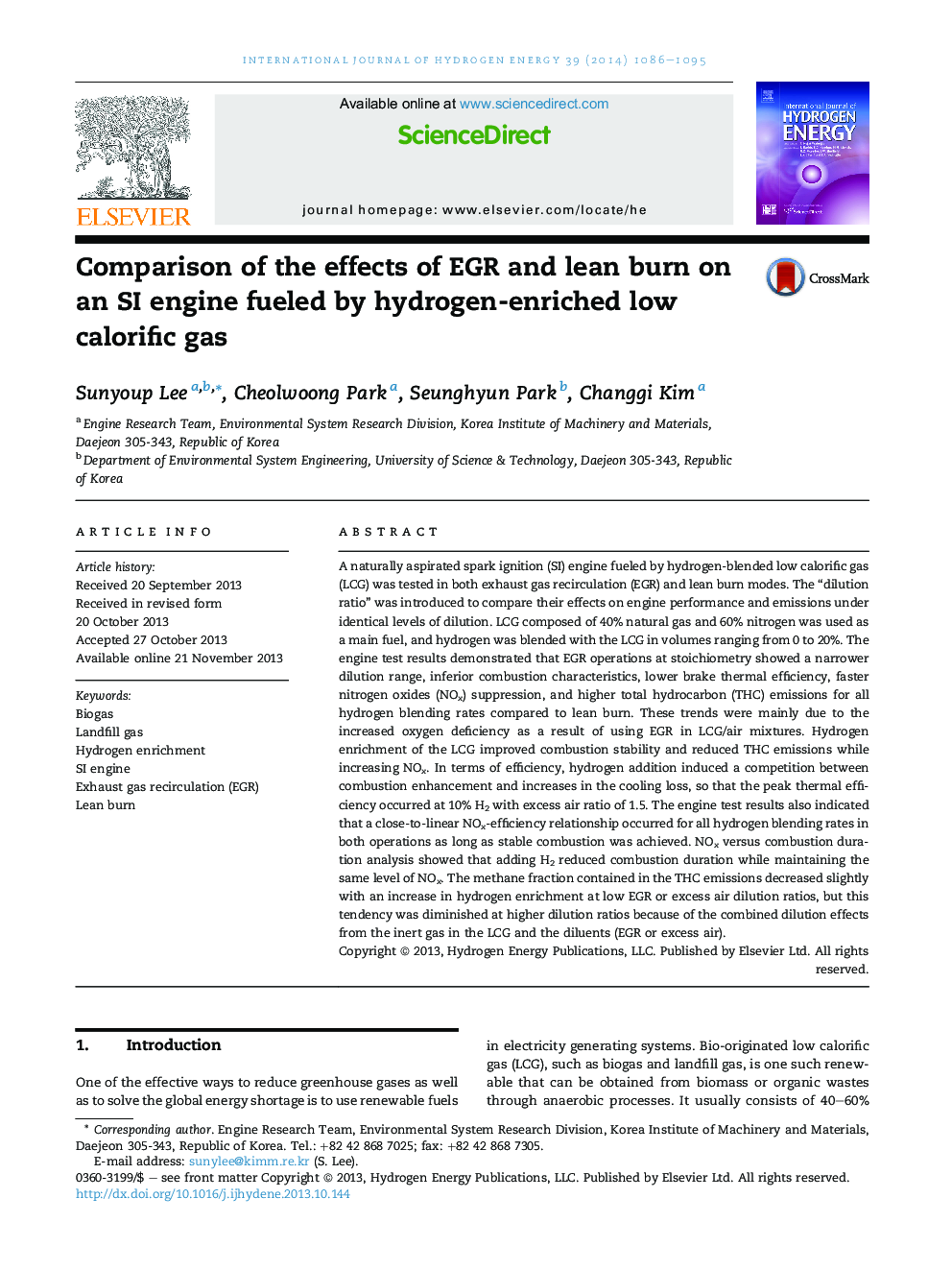| کد مقاله | کد نشریه | سال انتشار | مقاله انگلیسی | نسخه تمام متن |
|---|---|---|---|---|
| 1276556 | 1497507 | 2014 | 10 صفحه PDF | دانلود رایگان |

• Adding H2 to low calorific gas extended operating ranges of both EGR and lean burn.
• EGR caused O2 deficiency, but little change in specific heat in low calorific gas.
• Lean burn shows higher efficiency while EGR is effective in NOx reduction.
• H2 addition reduced combustion duration while maintaining the same NOx level.
• Adding H2 reduced CH4 in THC emissions at low dilution ratios in both modes.
A naturally aspirated spark ignition (SI) engine fueled by hydrogen-blended low calorific gas (LCG) was tested in both exhaust gas recirculation (EGR) and lean burn modes. The “dilution ratio” was introduced to compare their effects on engine performance and emissions under identical levels of dilution. LCG composed of 40% natural gas and 60% nitrogen was used as a main fuel, and hydrogen was blended with the LCG in volumes ranging from 0 to 20%. The engine test results demonstrated that EGR operations at stoichiometry showed a narrower dilution range, inferior combustion characteristics, lower brake thermal efficiency, faster nitrogen oxides (NOx) suppression, and higher total hydrocarbon (THC) emissions for all hydrogen blending rates compared to lean burn. These trends were mainly due to the increased oxygen deficiency as a result of using EGR in LCG/air mixtures. Hydrogen enrichment of the LCG improved combustion stability and reduced THC emissions while increasing NOx. In terms of efficiency, hydrogen addition induced a competition between combustion enhancement and increases in the cooling loss, so that the peak thermal efficiency occurred at 10% H2 with excess air ratio of 1.5. The engine test results also indicated that a close-to-linear NOx-efficiency relationship occurred for all hydrogen blending rates in both operations as long as stable combustion was achieved. NOx versus combustion duration analysis showed that adding H2 reduced combustion duration while maintaining the same level of NOx. The methane fraction contained in the THC emissions decreased slightly with an increase in hydrogen enrichment at low EGR or excess air dilution ratios, but this tendency was diminished at higher dilution ratios because of the combined dilution effects from the inert gas in the LCG and the diluents (EGR or excess air).
Journal: International Journal of Hydrogen Energy - Volume 39, Issue 2, 13 January 2014, Pages 1086–1095